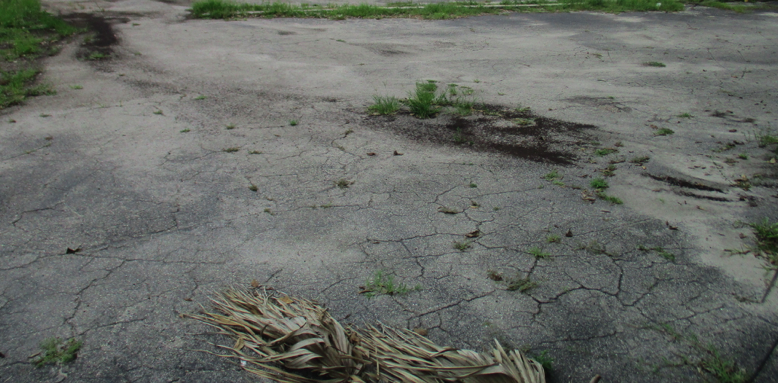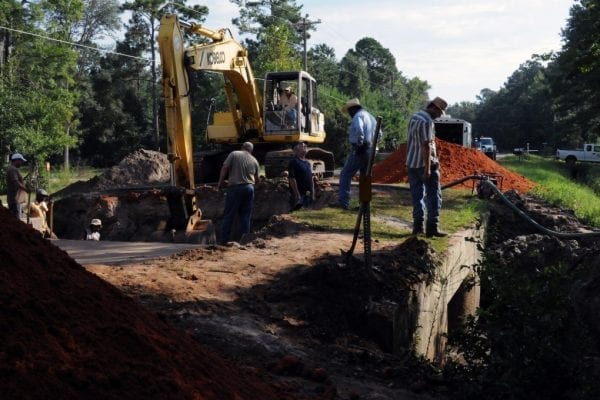Nothing lasts forever, and asphalt is no exception. There comes a time with every parking lot where you need to ask whether it’s time to repair it, or replace it altogether.
A properly paved asphalt lot can last 20 – 30 years, but the lifespan and condition of any lot depends on many factors. Let’s take a look at the various kinds of damage and repairs, and when you should replace a lot entirely.
The Types of Asphalt Damage
Cracking
Cracking can take many forms, including shrinkage, widening, edge cracks, slippage, alligator cracks, and reflection. Cracks are caused by many different factors, such as water penetration, oxidation from the sun, freezing and thawing, and poor initial construction. Even the most minor cracks should be sealed as soon as possible, as small cracks can grow into bigger problems. Water or other debris can settle inside, causing the crack to grow, softening the base, and further threatening the integrity of the pavement. Larger cracks may be a warning sign of deeper issues.
Rutting
Rutting is when the pavement shows depressions, or grooves, from wear and tear caused by wheel loads. Ruts can be dangerous, leading to vehicles hydroplaning (from ponded water) that can result in loss of driver control. They can also be a result of deeper sub-soil or design problems, and lead to further deterioration. Ruts less than ⅓ inch deep can generally be left as is, but deeper ruts should be leveled and resurfaced.
When It’s Time To Repair
Crack Sealing
Crack sealing is exactly what it sounds like – filling small cracks to prevent further damage. Cracks that are straight or less than a quarter-inch wide can easily be repaired with a liquid filler. Before sealcoating or resurfacing, all cracks and existing damage must be repaired, so crack sealing is a first step towards further repair and a necessary ongoing maintenance responsibility. A yearly schedule of crack sealing is best to prolong the life of your lot.
Seal Coating
After you’ve filled any cracks, you can apply a layer of sealcoating. Sealant keeps the lot looking new and prevents corrosion from a variety of elements, including water, oxidation, UV rays, and oil and gas spills. The ideal time to seal asphalt pavement is when deterioration is first discovered. A new asphalt lot should not be sealed until it is at least 6 months old, and should be resealed every 2 – 4 years, depending on weather and amount of traffic.
Resurfacing (aka overlaying)
Resurfacing, also known as overlaying, adds a new layer of asphalt, generally 1.5 – 2 inches in depth, on top of the older one. If done right, a new layer of asphalt can add 8 – 15 years to your current lot, and costs less than a full replacement. All cracks and damage to the old layer need to be repaired before resurfacing, as un-repaired cracks will undermine the new layer. Resurfacing in cold weather can lead to premature deterioration, so the rule of thumb is to pave when temperatures are 50° F and above. Just because a lot is showing serious wear and tear and cracking, that doesn’t mean it needs to be replaced. Resurfacing is a great option to improve the condition of your lot without spending a lot of money.
Mill and Resurface
Resurfacing sometimes is not an option due to existing drainage patterns. When this is an issue milling and resurfacing may be a viable choice. Milling the surface involves the removal of the top layer of asphalt (usually 1” to 1.5”). Once the asphalt is removed, it is then replaced with a new layer of asphalt. Though this is one of the more expensive repairs, the quality of the final product and the service life can rival that of a new parking lot.
When It’s Time to Replace
Sometimes, a parking lot is beyond the point where even resurfacing will help. The answer to whether you should repair or replace essentially comes down to the condition of the lot’s base. Resurfacing is only as good as the surface it is layered on top of. If your parking lot is failing due to an underlying design, structural, sub-soil, or construction issue, none of the resurfacing options listed above will solve the problem in the long term. Though the parking lot will initially look better, the “repair” will be short-lived.
If a parking lot is approaching 20 years of age, or if 25-35% of the total surface area is in need of removal due to significant damage, it is generally more economical and effective to completely reconstruct the parking lot. With proper maintenance, your new lot can last another 20 – 30 years.
Proper evaluation and recommendations are critical to avoid any financial missteps in getting your parking lot back on-line. Contact us today.





